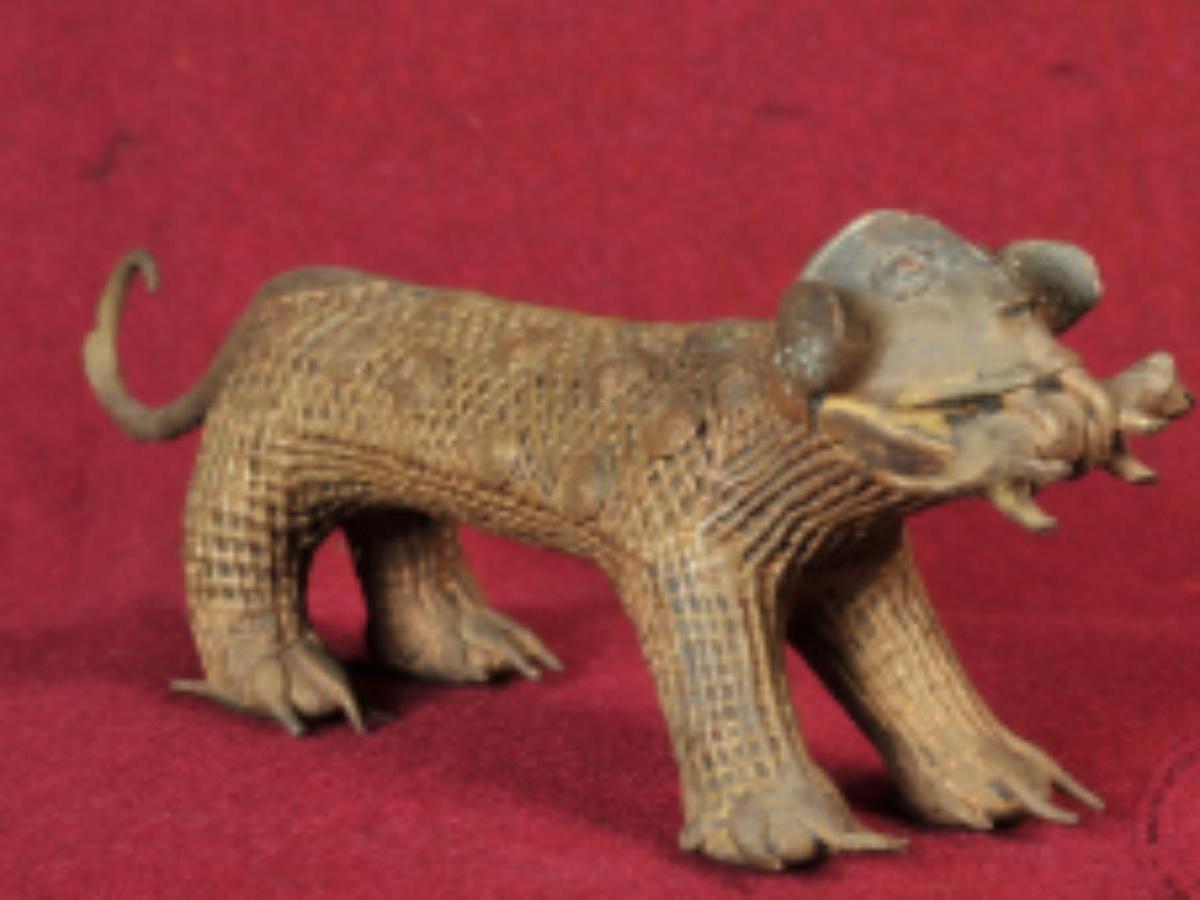State
Tribe Name
Art Type
short description
The Leopard Figure produced by the Gunsur Malias tribe is a magnificent testimony to traditional brass workmanship from the state of Odisha in India. The sculpture is so beautiful because it is made with the ancient technique of lost-wax casting, which has been passed down through generations of tribal artisans in eastern India. The figure depicts a leopard in a vertical stance holding another animal in its mouth, so representing the mighty hunter and the ecological cycle of life in the wild. The body of the leopard exhibits rhomboid patterns, each laid with circular dots creating a beautifully textured surface expressive of the tribe's sophisticated aesthetic traditions.
Thumbnail

Filter Postion
Left
Filter Background
Off
Theme
Filter Header Image

content
Image

description
The Leopard Figure produced by the Gunsur Malias tribe is a magnificent testimony to traditional brass workmanship from the state of Odisha in India. The sculpture is so beautiful because it is made with the ancient technique of lost-wax casting, which has been passed down through generations of tribal artisans in eastern India. The figure depicts a leopard in a vertical stance holding another animal in its mouth, so representing the mighty hunter and the ecological cycle of life in the wild. The body of the leopard exhibits rhomboid patterns, each laid with circular dots creating a beautifully textured surface expressive of the tribe's sophisticated aesthetic traditions.
These patterns hold both decorative as well as symbolic significance, probably referring to themes of life force, the hunting spirit, or the revered status of an animal in tribal mythology. The face of the leopard is left plain, perhaps in order to highlight its expression and limbs, whereas its four legs are elaborately carved with claws, almost accentuating the strength and dominion of the animal. Curved, the tufted tail balances the composition, lending elegance to the form and amplifying a sense of motion. More than just a pretty object, this brass leopard embodies the Gunsur Malias' relationship with nature and embodiments of their narratives in material culture. Such works are often used in ritual or ceremonial contexts, or as objects of prestige and symbolic meaning within tribal households.
These patterns hold both decorative as well as symbolic significance, probably referring to themes of life force, the hunting spirit, or the revered status of an animal in tribal mythology. The face of the leopard is left plain, perhaps in order to highlight its expression and limbs, whereas its four legs are elaborately carved with claws, almost accentuating the strength and dominion of the animal. Curved, the tufted tail balances the composition, lending elegance to the form and amplifying a sense of motion. More than just a pretty object, this brass leopard embodies the Gunsur Malias' relationship with nature and embodiments of their narratives in material culture. Such works are often used in ritual or ceremonial contexts, or as objects of prestige and symbolic meaning within tribal households.
Image Mode
landscape
promoted
On
Verified
Off
